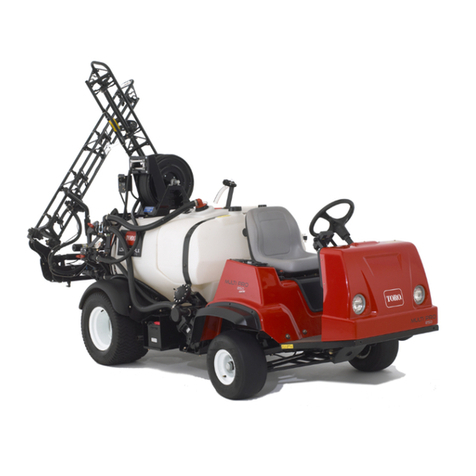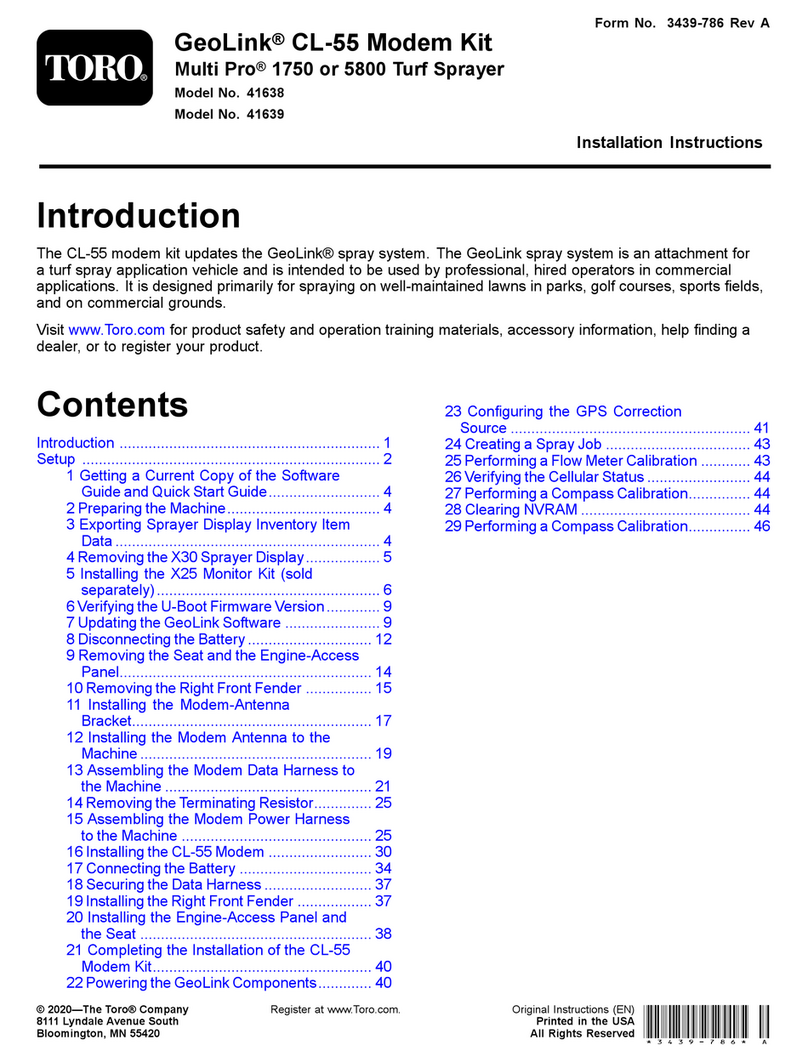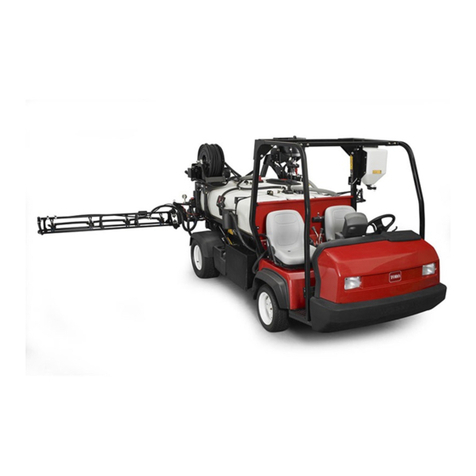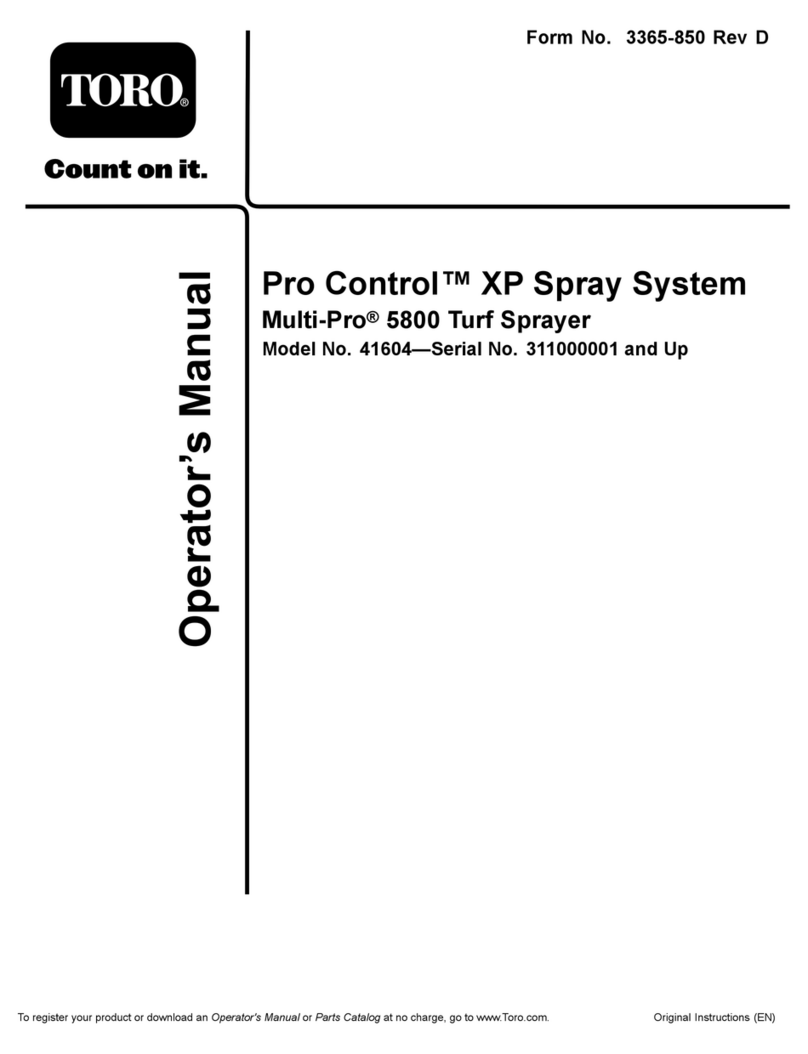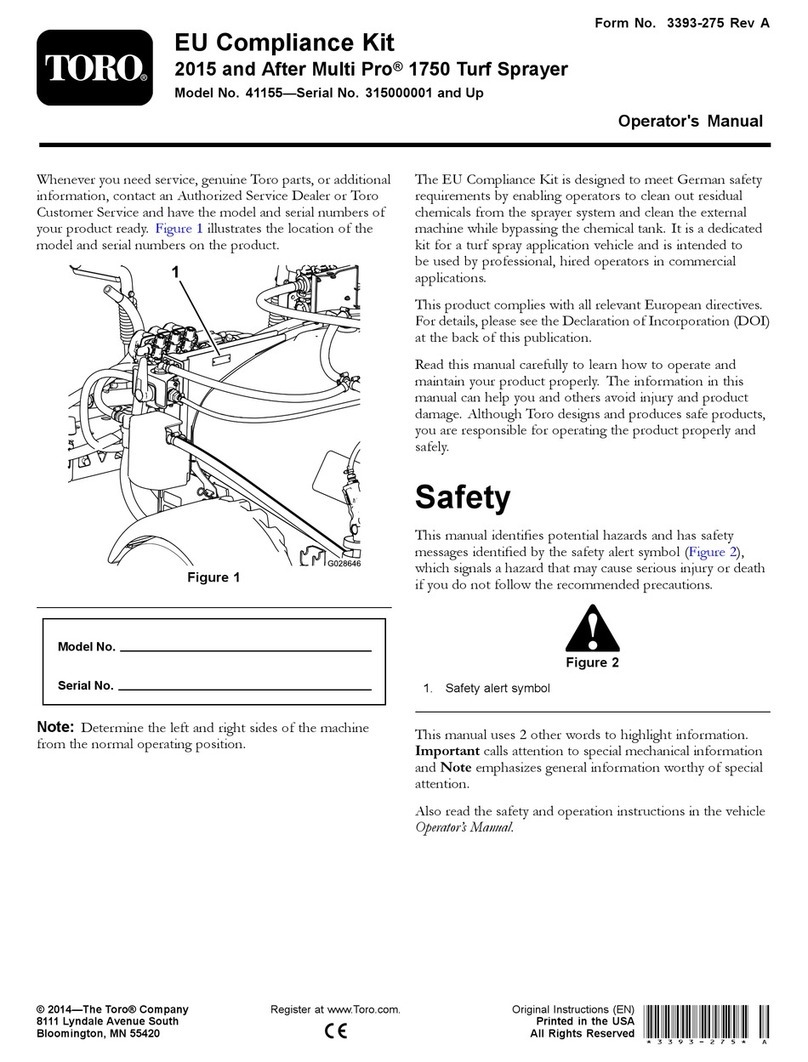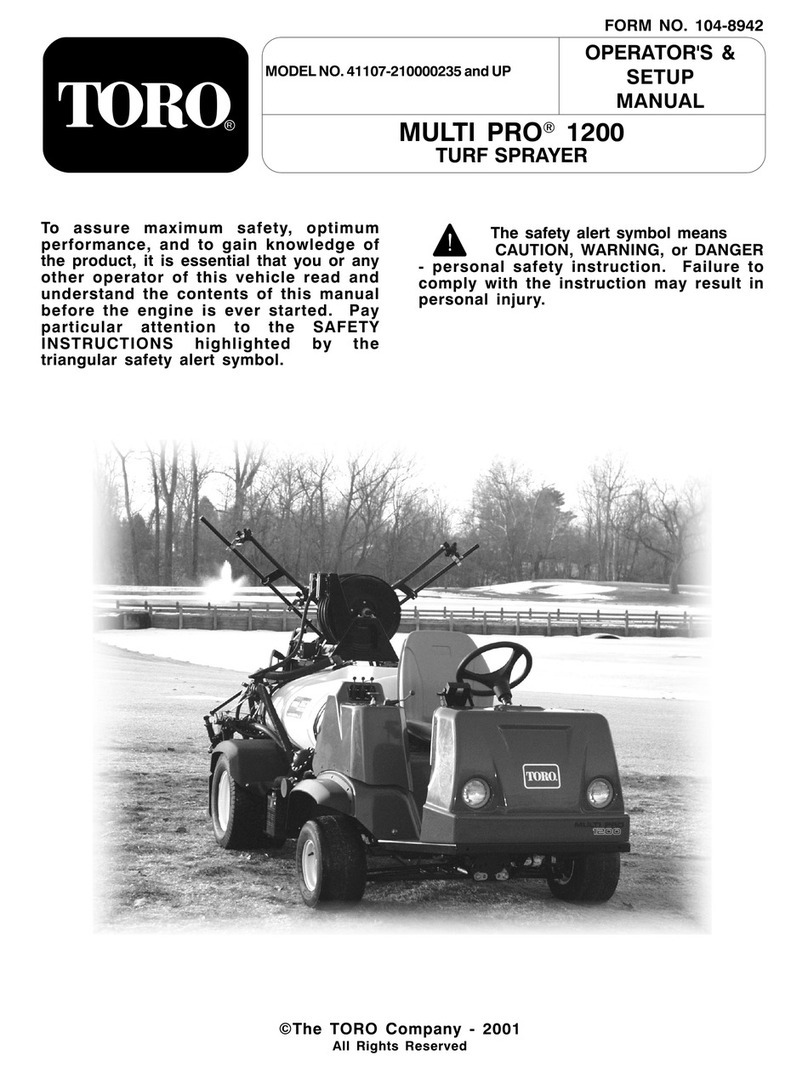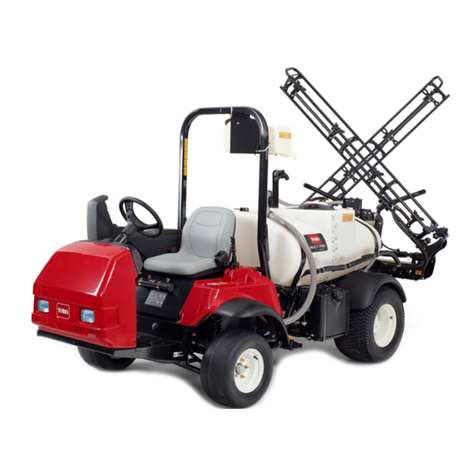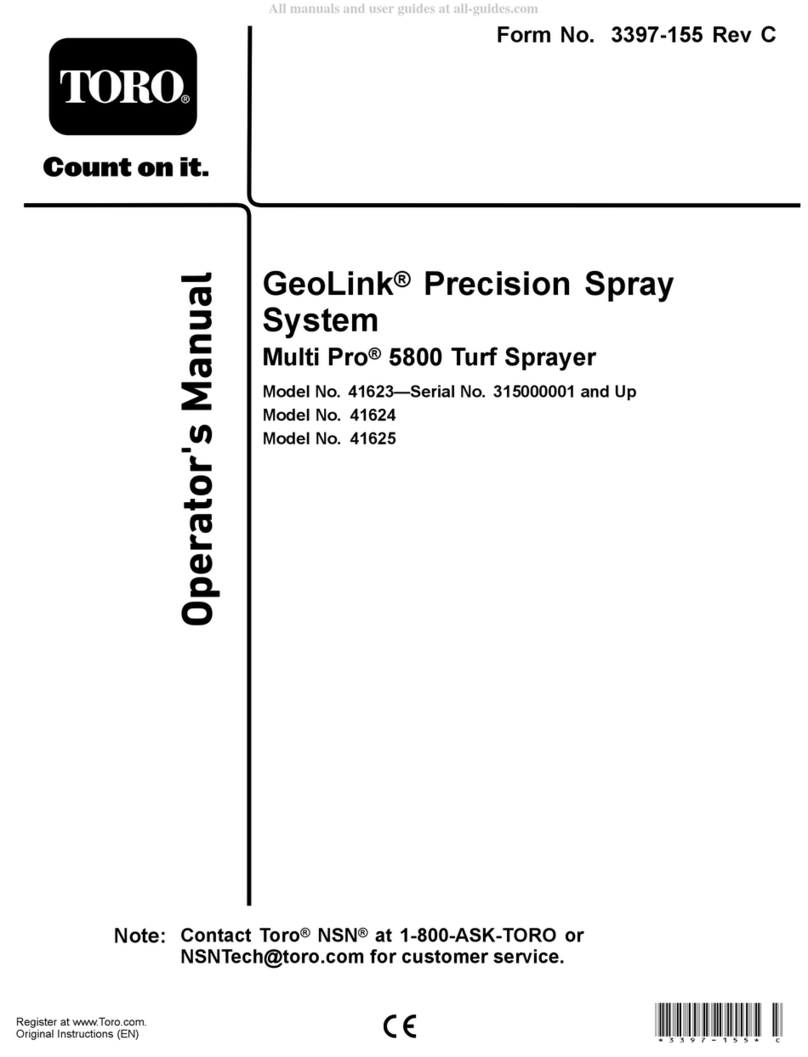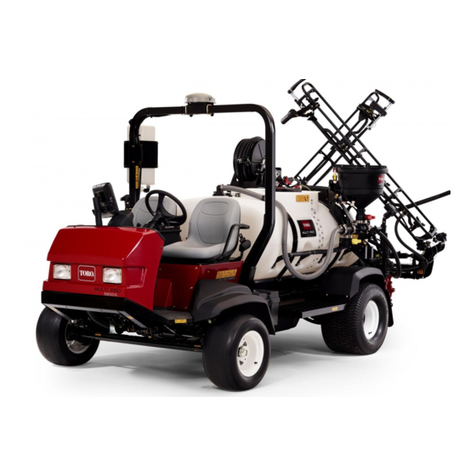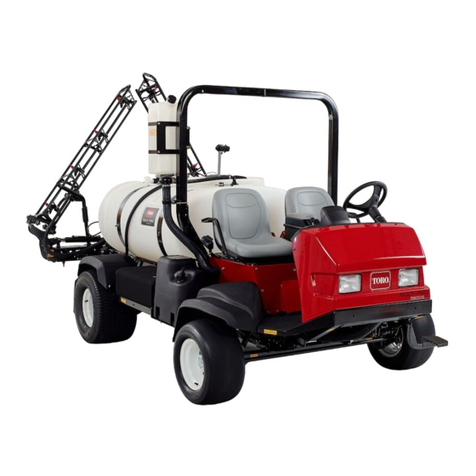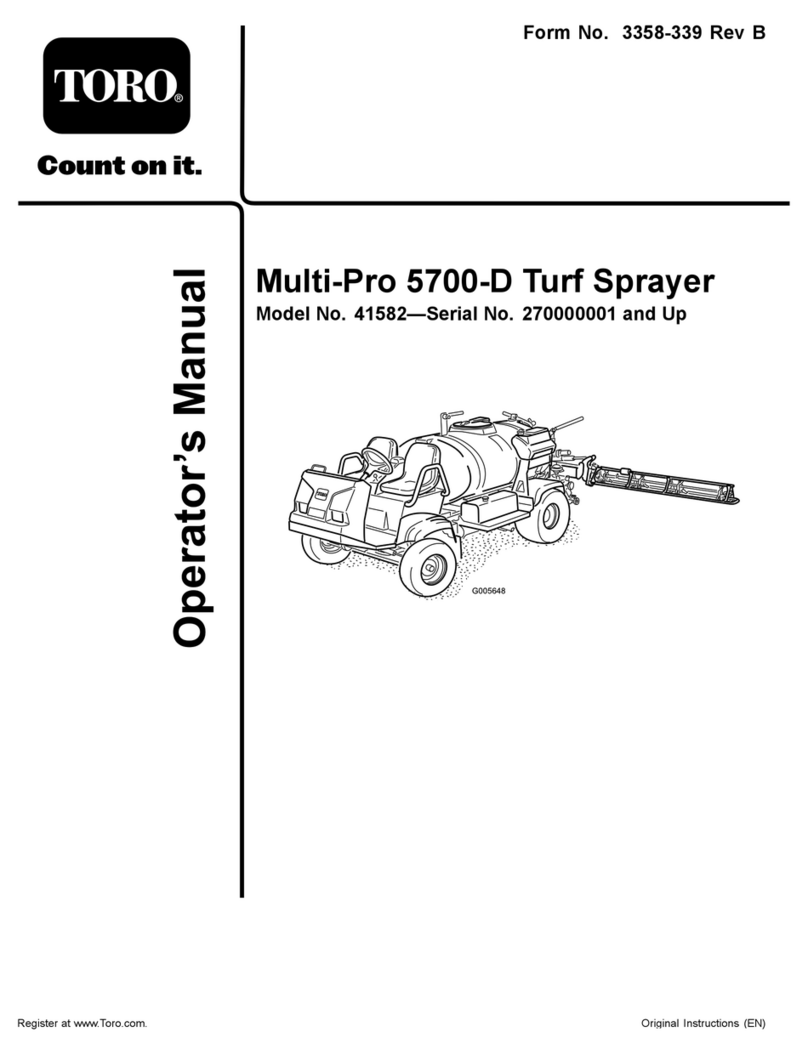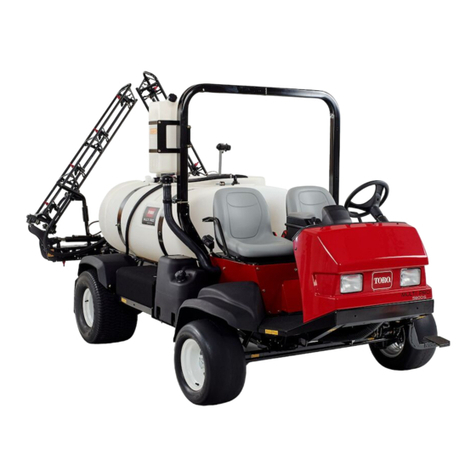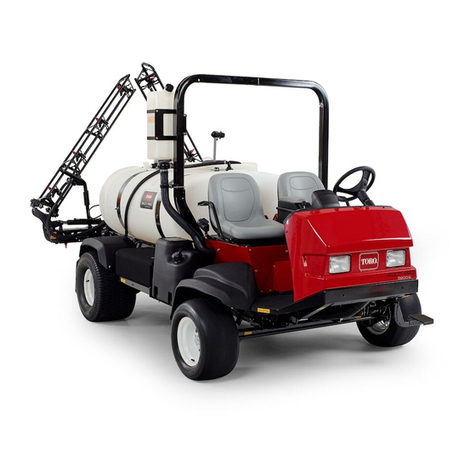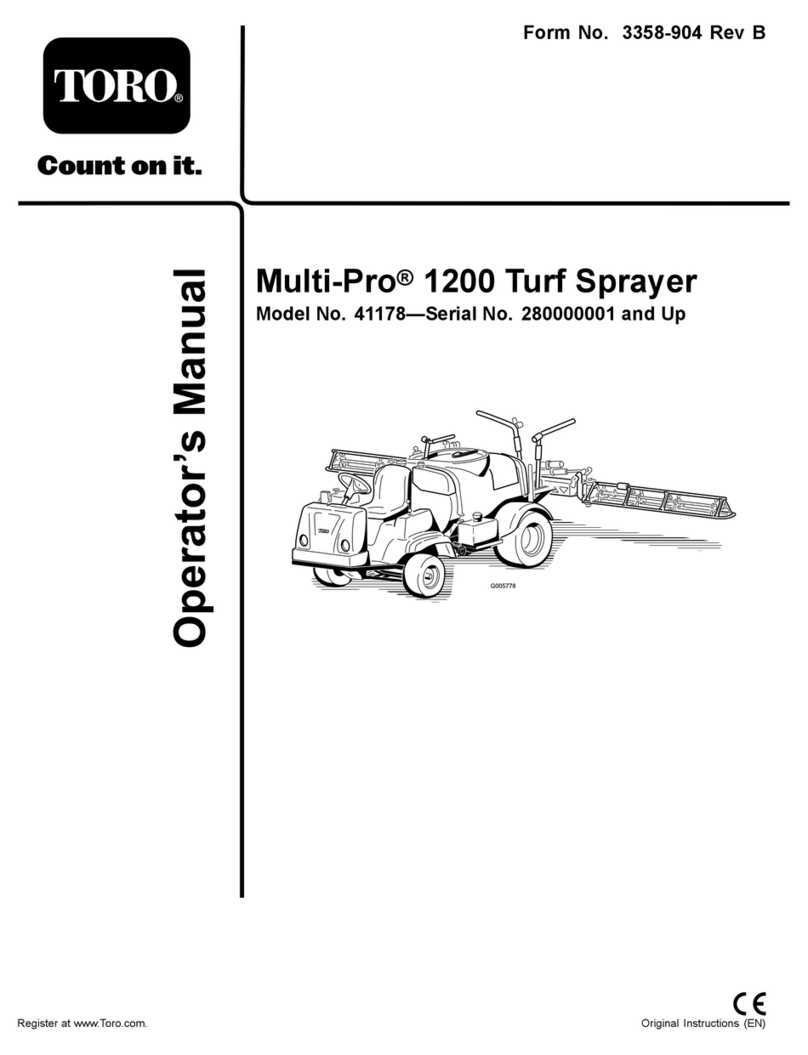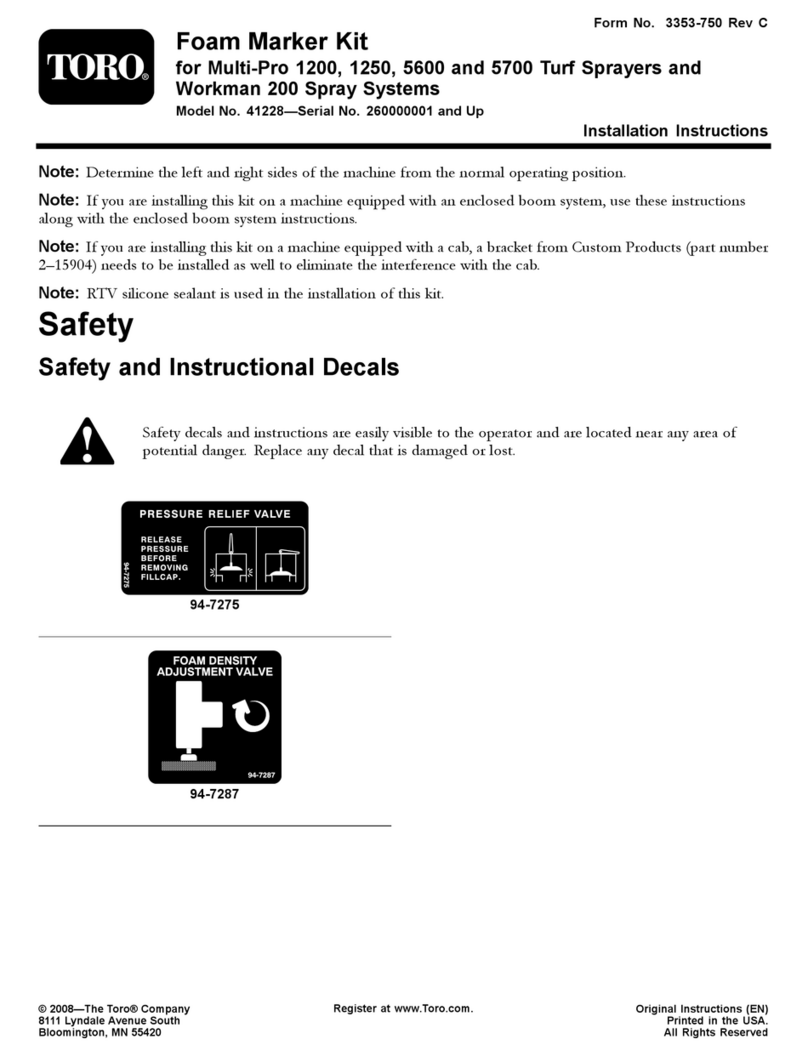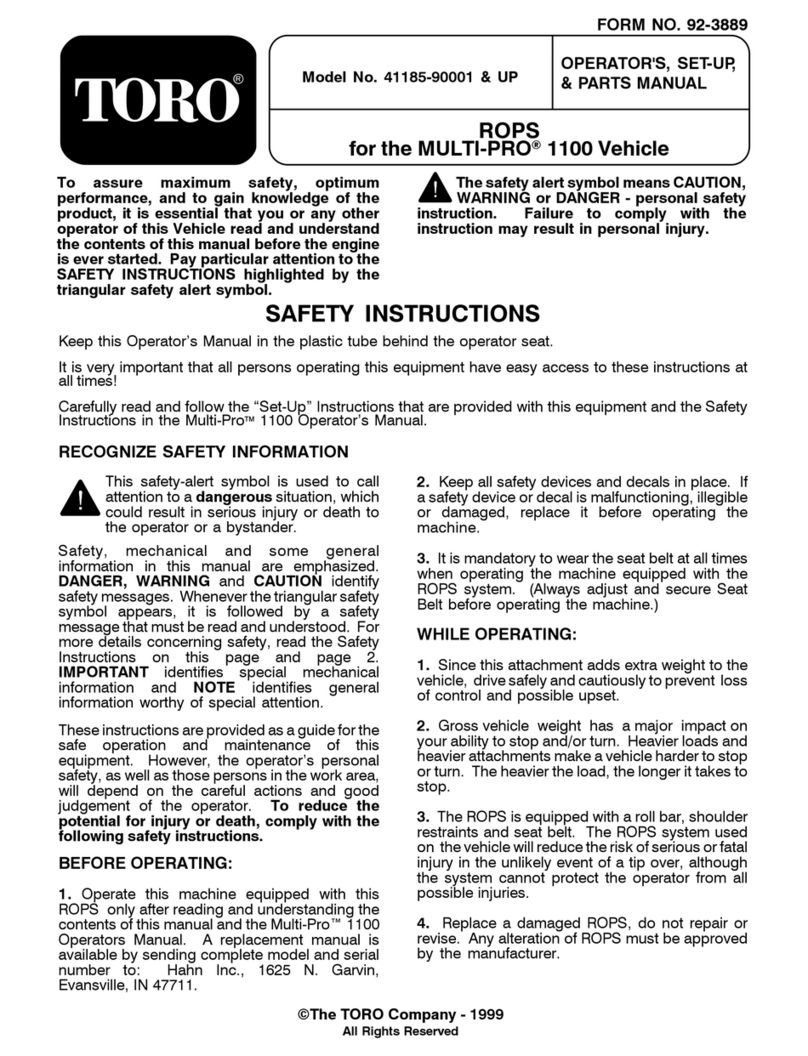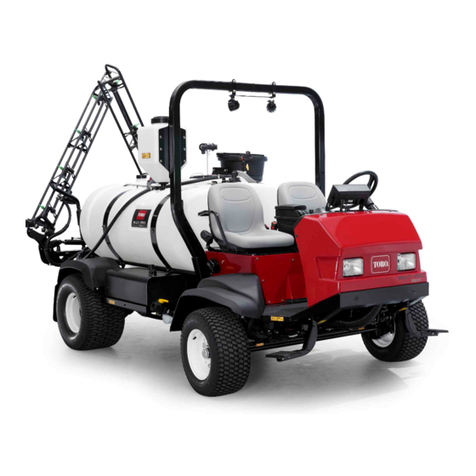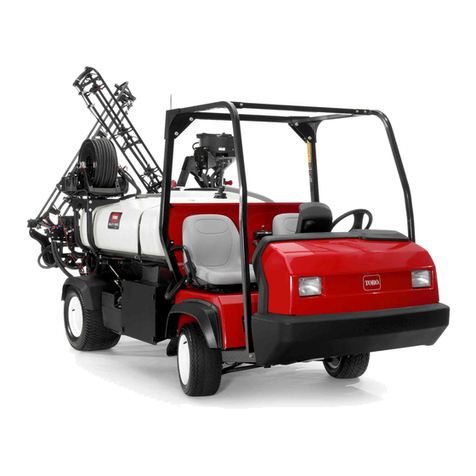
6
•Never drive across a steep hill; always drive straight up
or down or go around the hill.
•If the engine stalls or you begin to lose headway while
climbing a hill, gradually apply the brakes and slowly
back straight down the hill.
•Turning while traveling up or down hills can be
dangerous. If you have to turn while on a hill, do it
slowly and cautiously. Never make sharp or fast turns.
•Heavy loads affect stability. Reduce the weight of the
load and your speed when operating on hills.
•Avoid stopping on hills, especially with a load.
Stopping while going down a hill will take longer than
stopping on level ground. If the sprayer must be
stopped, avoid sudden speed changes, which may
initiate tipping or rolling of the sprayer. Do not slam on
the brakes when rolling backward, as this may cause the
sprayer to overturn.
•The Toro Company strongly recommends installing the
optional ROPS Kit when operating on hilly terrain. If
you install a ROPS, always wear the seat belt when
driving the sprayer.
•Reduce speed and load when operating on rough terrain,
uneven ground, and near curbs, holes, and other sudden
changes in terrain. Loads may shift, causing the sprayer
to become unstable.
Sudden changes in terrain may cause abrupt
steering wheel movement, possibly resulting in
hand and arm injuries.
•Reduce your speed when operating on rough
terrain and near curbs.
•Grip the steering wheel loosely around the
perimeter. Keep your hands clear of the steering
wheel spokes.
Warning
Loading
The weight of the cargo can change the sprayer center of
gravity and sprayer handling. To avoid loss of control and
personal injury, follow these guidelines:
•Reduce the weight of the load when operating on hills
and rough terrain to avoid tipping or overturning of the
sprayer.
•Liquid loads can shift. This shifting happens most often
while turning, going up or down hills, suddenly
changing speeds, or while driving over rough surfaces.
Shifting loads can cause the sprayer to tip over.
•When operating with a heavy load, reduce your speed
and allow for sufficient braking distance. Do not
suddenly apply the brakes. Use extra caution on slopes.
•Be aware that heavy loads increase your stopping
distance and reduce your ability to turn quickly without
tipping over.
Maintenance
•Only permit qualified and authorized personnel to
maintain, repair, adjust, or inspect the sprayer.
•Before servicing or making adjustments to the machine,
stop the engine, set the parking brake, and remove the
key from the ignition to prevent someone from
accidentally starting the engine.
•To make sure that the entire machine is in good
condition, keep all nuts, bolts, and screws properly
tightened.
•To reduce the potential for fire, keep the engine area
free of excessive grease, grass, leaves, and
accumulation of dirt.
•Never use an open flame to check the level or leakage
of fuel or battery electrolyte.
•If the engine must be running to perform a maintenance
adjustment, keep your hands, feet, clothing, and any
parts of your body away from the engine and any
moving parts. Keep everyone away.
•Do not use open pans of fuel or flammable cleaning
fluids when cleaning parts.
•Do not adjust the ground speed governor. To ensure
safety and accuracy, have an Authorized Toro
Distributor check the ground speed.
•Keep your body and hands away from pin hole leaks or
nozzles that eject high pressure fluid. Use cardboard or
paper to find leaks. Fluid escaping under pressure can
penetrate skin and cause injury requiring surgery within
a few hours by a qualified surgeon or gangrene may
result.
•If major repairs are ever needed or assistance is
required, contact an Authorized Toro Distributor.
•To be sure of optimum performance and safety, always
purchase genuine Toro replacement parts and
accessories. Replacement parts and accessories made by
other manufacturers could be dangerous. Altering this
sprayer in any manner that may affect sprayer
operation, performance, durability, or its use, may result
in injury or death. Such use could void the product
warranty.
